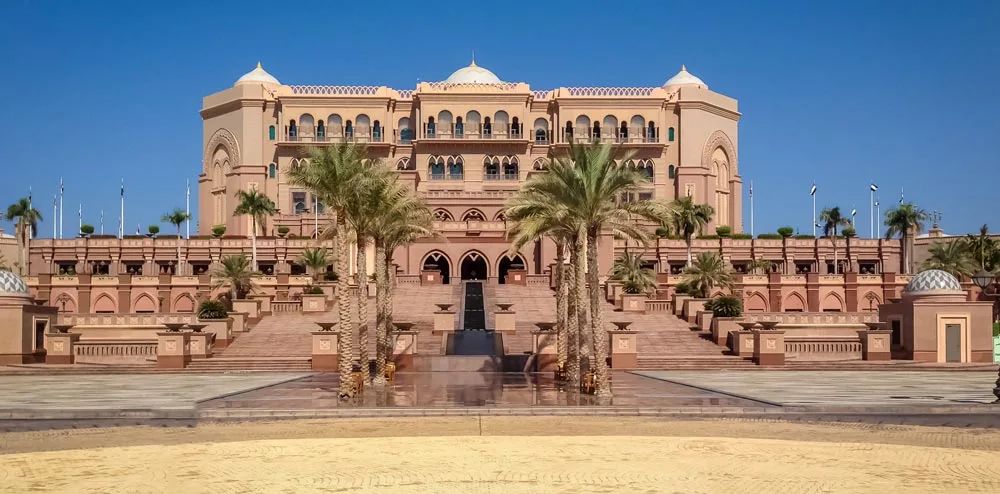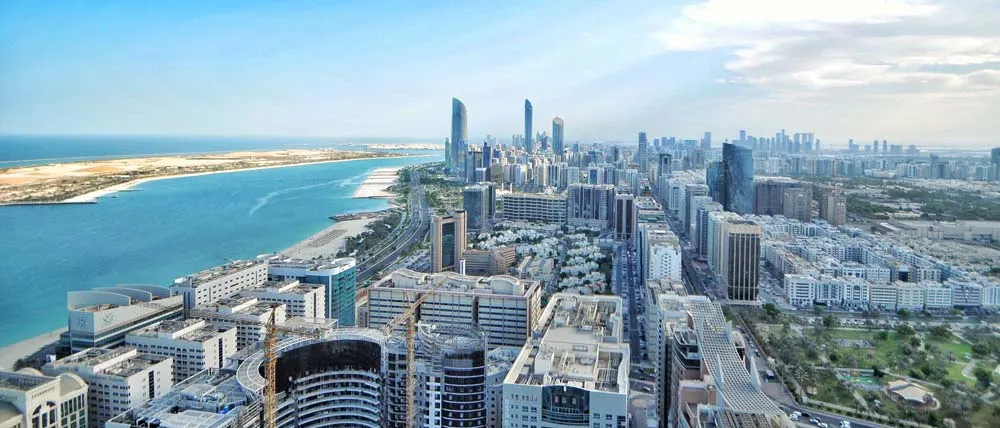Not sure how to visit the Middle East? We share how to travel there, the best countries to visit in the Middle East and the best time to visit.
Traveling to the Middle East is more than just a vacation; it’s an experience filled with culture, spirituality, and discovery. For centuries, this region has been the crossroads of civilizations, trade, and faith, attracting travelers, scholars, and adventurers alike.
How to Visit the Middle East

Why Travel to the Middle East?
The Middle East is a region rich in history, faith, and natural wonders. It is home to some of the world’s most iconic landmarks, sacred cities, and breathtaking landscapes.
Whether you’re drawn to the ancient ruins of Petra, the futuristic skyline of Dubai, the holy cities of Makkah and Jerusalem, or the natural beauty of the deserts and seas, the region offers something unforgettable for every traveler and will make you start thinking about how to visit the Middle East.
For many, the trip is more than sightseeing—it’s a chance to connect with centuries-old traditions, explore spiritual roots, and witness firsthand the hospitality and warmth that Middle Eastern culture is known for.
Preparing for your visit to the Middle East
Before you set out, preparation is essential. A smooth trip starts with planning, understanding the region’s customs, and ensuring all legal and health requirements are met.
Passports and Visas: Each country in the Middle East has its own entry requirements. Research visa regulations for your destination(s) and allow sufficient time for processing. Many travel agencies can assist in securing the right documents.
Travel Packages: When looking at how to visit the Middle East, many choose to travel with a a company. Look for reputable agencies offering affordable Middle East travel packages that include flights, accommodations, and guided tours. Bundled deals often save money and simplify logistics.
Health and Safety: Check if any vaccinations are recommended. Carry any prescription medication with clear labeling and copies of your prescriptions.
Cultural Awareness: Learn about local customs, dress codes, and etiquette. The Middle East values modesty and respect, especially in sacred or historic sites.
Financial Planning: Research currency exchange rates and prepare a mix of cash and cards. Some markets and small towns prefer cash, while cities are card-friendly.
By organizing these essentials in advance, you ensure that your journey remains stress-free and focused on exploration rather than unexpected complications.

Understanding the Cultural “Ihram”
While Umrah requires a formal state of Ihram, travel in the Middle East calls for a mental state of respect, humility, and openness. The region is deeply tied to faith and tradition, and entering with the right mindset enriches the experience.
Dress Respectfully: When looking at how to visit the Middle East, it is important to plan what you wear. In many Middle Eastern countries, modest dress is appreciated. For men, this usually means avoiding overly casual or revealing clothing. For women, covering shoulders and knees is often preferred, and in some places, a headscarf may be necessary.
Respecting Sacred Spaces: Many sites, whether mosques, churches, or synagogues, have rules for entry. Removing shoes, covering heads, or maintaining silence are common requirements.
Mindful Behavior: Avoid public displays of affection, use polite language, and be patient in crowds. Middle Eastern hospitality is legendary, and showing equal respect builds mutual appreciation.
Approaching your journey with reverence helps you connect with the people, culture, and history on a much deeper level.

Best things to do in the Middle East
Much like Tawaf involves circling the Kaaba, traveling through when know how to visit the Middle East, often feels like moving between interconnected centers of history and culture. Each destination adds a layer to your understanding of the region.
Here are some must-visit highlights:
Saudi Arabia: Beyond the holy cities of Makkah and Madinah, modern Riyadh and Jeddah showcase Saudi Arabia’s balance of tradition and transformation, with plenty of things to do in Saudi Arabia.
United Arab Emirates: Dubai’s modern marvels and Abu Dhabi’s cultural treasures blend luxury with heritage.
Jordan: Petra, Wadi Rum, and the Dead Sea provide a glimpse of ancient civilizations and natural wonders.
Egypt: The pyramids of Giza, Luxor’s temples, and the Nile River connect visitors to thousands of years of history.
Israel and Palestine: Jerusalem’s sacred sites resonate with multiple faiths, offering a profound spiritual journey.
Qatar, Bahrain, and Oman: Smaller but vibrant, these Gulf states offer stunning architecture, pristine beaches, and traditional souks.
Embrace Local Journeys and Traditions (Your Personal “Sa’i” Between Cultures)
Just as Sa’i symbolizes perseverance and devotion, moving between different Middle Eastern experiences requires curiosity and adaptability. Explore:
Markets and Souks: Traditional bazaars like Istanbul’s Grand Bazaar or Muscat’s Mutrah Souk are treasure troves of spices, textiles, and handcrafted goods.
Culinary Experiences: From Saudi kabsa to Lebanese mezze, Persian kebabs, and Turkish baklava, Middle Eastern cuisine reflects centuries of cultural blending.
Desert Adventures: Camel rides, dune bashing, and stargazing in the desert connect you to the raw, natural beauty of the region.
Cultural Performances: Music, poetry, and dance tell the stories of civilizations past and present.
Every movement between traditions is a reminder that the Middle East is not a single culture but a diverse tapestry, woven over millennia.
Best time to visit the Middle East
During these months, the weather is cooler and more comfortable compared to the scorching summer heat. Desert destinations like Dubai, Abu Dhabi, Oman, Jordan, and Saudi Arabia are pleasant for sightseeing, outdoor adventures, and cultural experiences.
Spring (March–April) and Autumn (October–November) are especially ideal, offering warm but manageable temperatures and fewer crowds than the peak winter months.
If you visit in Summer (May–September), expect extremely high temperatures (often 40°C/104°F+), though this season can bring lower prices and fewer tourists—best suited for travelers comfortable with heat and planning indoor activities.
Getting to the Middle East

By Air (Most Common & Easiest)
- The Middle East is extremely well connected with major international airports in hubs like Dubai (DXB), Doha (DOH), Abu Dhabi (AUH), Istanbul (IST), and Riyadh (RUH).
- From North America & Europe: Dozens of direct flights operate daily to Dubai, Doha, Istanbul, Tel Aviv, Amman, and Cairo.
- From Asia & Africa: Middle Eastern hubs act as stopover gateways, making it easy to connect onward.
- Top airlines include Emirates, Qatar Airways, Etihad, Turkish Airlines, Saudi, and EgyptAir.
By Sea (Cruises & Ferries)
- Many Mediterranean and Persian Gulf cruises stop at ports in the UAE, Oman, Egypt, and Israel.
- Ferries connect some Middle Eastern countries, such as:
- Egypt ↔ Jordan (Aqaba ↔ Nuweiba across the Red Sea)
- UAE ↔ Iran (ferry services from Dubai/Sharjah to Bandar Abbas, though schedules can vary).
By Land (Regional Travel)
- If you’re already in Europe or Asia, you can travel into the Middle East overland.
- Popular land routes include:
- Turkey → Middle East: Buses and trains link Turkey with Syria, Iraq, and Iran (though some borders may be restricted depending on safety).
- Jordan ↔ Israel ↔ Egypt: Multiple border crossings allow travelers to move between these countries by bus, car, or taxi.
- Gulf countries (Saudi Arabia, UAE, Oman, Qatar, Bahrain, Kuwait) are linked by highways, and buses run between them.

Tips for a Smooth Middle Eastern Journey
- When looking at how to visit the Middle East, firstly, you must stay hydrated, especially in desert climates.
- Carry a reusable water bottle; some cities offer safe refill points.
- Wear comfortable shoes; many historic sites require lots of walking.
- Keep respectful distance in crowded religious or cultural sites.
- Make time for reflection—sometimes the quiet moments are the most meaningful.
Traveling to the Middle East is more than a trip—it’s a journey through time, faith, and humanity. By preparing carefully, approaching with respect, and embracing the diversity of experiences, you gain not just memories but insight, humility, and inspiration.
For travelers in the USA, affordable travel packages make this life-changing journey accessible. With the right planning and open heart, your Middle Eastern adventure can be an unforgettable chapter in your personal story—filled with culture, spirituality, and the timeless beauty of one of the world’s most significant regions.


burn mail
Wednesday 24th of September 2025
This post was exactly what I needed to read today Your words have provided me with much-needed clarity and reassurance